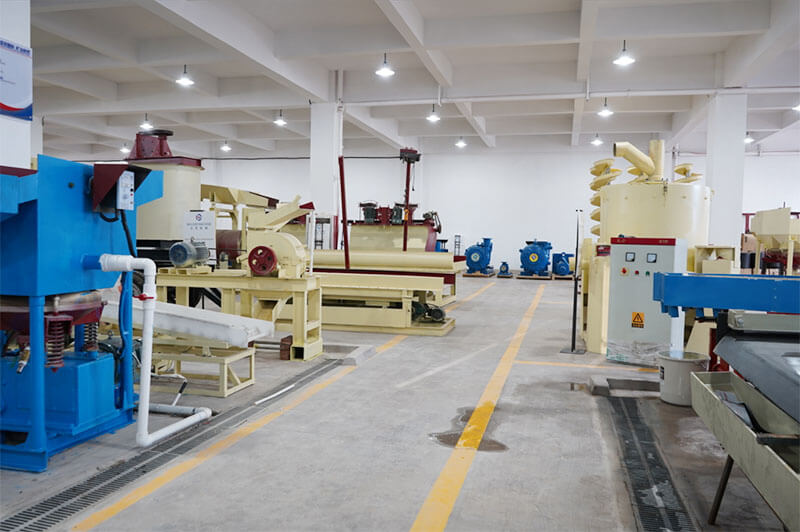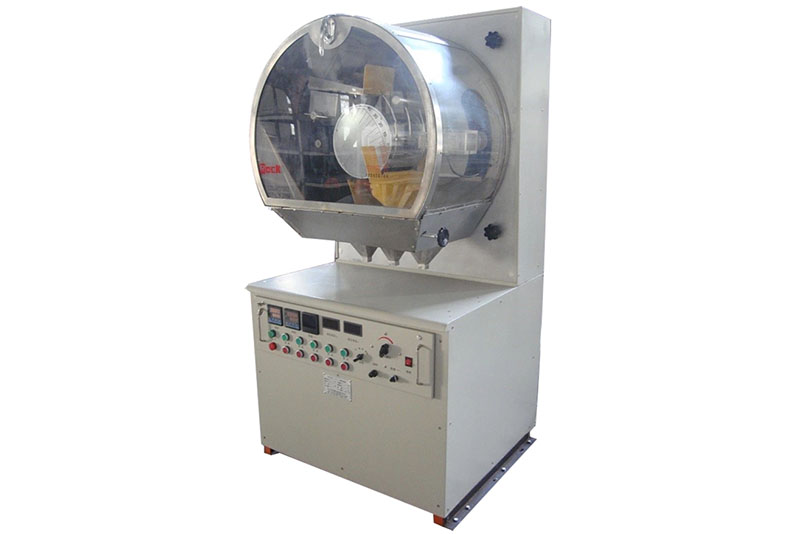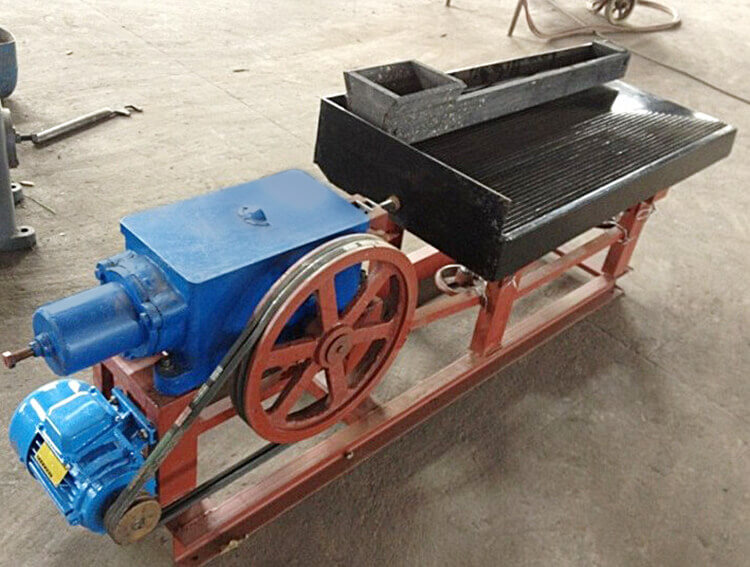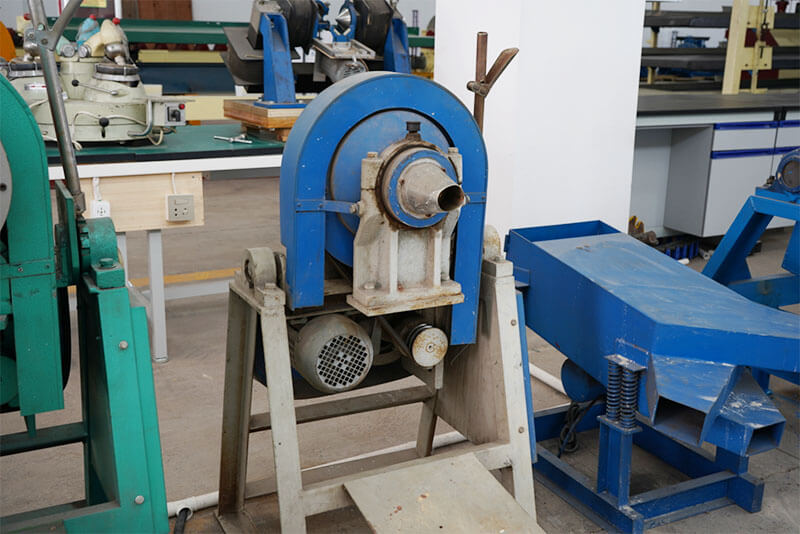Copper is the backbone of modern civilization, an essential metal for everything from electrical wiring and renewable energy systems to electric vehicles and advanced electronics. For the majority of the world’s copper production, that journey begins with sulfide copper ore. The process of unlocking this copper is a sophisticated sequence of physical and chemical steps known as beneficiation. For any mining project, understanding this process and validating it through rigorous laboratory testing is the critical path from a mineral deposit to a profitable mine. This blog will serve as your definitive guide, answering the essential questions: What is sulfide copper ore? How to beneficiate copper ore? And how do you conduct and operate a successful lab-scale beneficiation test?
What is Sulfide Copper Ore?
In simple terms, sulfide copper ore is a type of copper ore where the copper is chemically bonded with sulfur, forming various mineral compounds. Unlike oxide copper ores, sulfide ores are more complex and require a more energetic approach to release the copper. These ores are typically found in deep, hard-rock deposits and are the primary source of the world’s copper.
The most widespread sulfide copper mineral is Chalcopyrite (CuFeS₂). If you’ve seen a brassy-yellow mineral with a metallic luster in a rock sample, you’ve likely seen chalcopyrite. It accounts for nearly 70% of all copper reserves. Other economically significant sulfide copper minerals include:
- Chalcocite (Cu₂S): A secondary, richer copper sulfide often found in the enrichment zones of deposits.
- Bornite (Cu₅FeS₄): Known as “peacock ore” due to its iridescent tarnish of blue, purple, and red.
- Covellite (CuS): A distinctive indigo-blue mineral.
The core objective of beneficiation is to efficiently separate the valuable copper sulfide minerals from the worthless gangue, creating a high-grade concentrate suitable for the next stage: smelting.
Sulfide Copper Ore Beneficiation Process
The beneficiation of sulfide copper ore is a multi-stage process to upgrade the ore. The industry-standard method is Froth Flotation, a versatile and highly efficient separation technique that exploits the differences in the surface properties of the minerals. Here is a step-by-step breakdown of the entire process.
Comminution: Liberating the Copper Minerals
The journey begins with breaking the rock. The ore from the mine is typically large, with copper minerals tightly bound within the gangue. Comminution—the progressive crushing and grinding of ore—is used to break the ore down into fine particles.
- Crushing: Run-of-Mine ore is passed through primary (jaw crusher) and secondary crushers to reduce it to rocks smaller than 20-30 cm.
- Grinding: The goal is to achieve a particle size fine enough to “liberate” the individual copper sulfide grains from the gangue particles.
Froth Flotation: The Heart of Separation
Once the ore is finely ground and mixed with water to form a slurry, it enters flotation cells. Here, the magic of surface chemistry takes over. The process involves several key conditioning steps:
Conditioning with Reagents: Mix the slurry with specific chemical reagents: Collectors, Frothers, Modifiers/Depressants, Aeration and Separation, Cleaning and Scavenging.

Dewatering: Creating a Handlable Product
The final copper concentrate from the flotation circuit is a slurry containing roughly 25-35% copper.
- Thickening: The concentrate slurry enters a large thickener, where gravity settles the solid particles to the bottom, producing a denser underflow.
- Filtration: The thickened concentrate is then filtered using vacuum or pressure filters (e.g., disc filters or filter presses) to create a damp filter cake typically containing 8-12% moisture. This cake is the final product, ready for transport and smelting.
How to Operate a Lab Sulfide Copper Ore Beneficiation Test?
A well-executed test program de-risks the project, optimizes the process flow sheet, and provides critical data for plant design. The operation of a lab test is a scaled-down, meticulously controlled version of the industrial process.
Phase 1: Sample Preparation
It all starts with a representative sample. A large sample of drill core or bulk ore is collected, crushed in a lab jaw crusher to -10mm, and then meticulously split using a riffle splitter to create smaller, representative sub-samples for testing. It ensures that the test results are a true reflection of the entire ore body.
Phase 2: Grindability Testing
The first critical test determines the ore’s resistance to grinding. The Bond Work Index test is the industry standard. It involves a lab ball mill and a specific procedure to calculate the energy (in kilowatt-hours per ton) required to reduce the ore from a theoretically infinite feed size to 80% passing 100 microns. This data is fundamental for sizing the industrial grinding mills.
Phase 3: Flotation Testing – The Core of the Lab Work
It is typically with a 1 to 5-liter capacity in a laboratory flotation cell. The test is a systematic investigation of variables.
- Stage A: Grinding and Pulp Preparation: A known mass of ore is ground in a lab ball mill for a predetermined time to achieve a target grind size (e.g., 80% passing 75 microns).
- Stage B: Conditioning: The ground slurry enters the flotation cell. The pH is measured and adjusted. The collector is added and conditioned for a set time to allow it to coat the mineral surfaces. Add the frother last.
- Stage C: Flotation and Froth Collection: Introduce air at a controlled rate. The froth that forms is manually scraped off at regular intervals (e.g., every 15-30 seconds) over a total flotation time (e.g., 10-15 minutes). The concentrates from different time intervals are often collected separately to understand the kinetics of flotation.
- Stage D: Analysis and Calculation: All products—the cumulative concentrates and the final tailings—are filtered, dried, weighed, and sent for chemical assay (to determine copper content).
Phase 4: Process Optimization
A single test is just a starting point. A test program involves running dozens of tests, each time varying a single parameter to understand its effect.
Flotation time
The goal is to find the optimum conditions that yield the highest possible copper recovery while maintaining an economically attractive concentrate grade.
Lab Equipment for Sulfide Copper Ore Beneficiation Testing
A well-equipped mineral processing laboratory is essential for generating reliable data. Here is a breakdown of the key pieces of equipment needed for a comprehensive sulfide copper ore beneficiation testing program.
Crushing and grinding Equipment:
- Jaw Crusher: For primary crushing of samples to -10mm.
- Roll Crusher or Cone Crusher: For secondary crushing to produce a finer feed for grinding mills.
- Laboratory Rod Mill / Ball Mill: Used for the controlled grinding of samples for flotation testing and for determining the Bond Work Index.
Classification and Sizing Equipment:
Sieve Shakers and Test Sieves: A complete set of sieves from 100mm down to 20 microns (micrometers) is crucial for determining particle size distribution (PSD), a critical parameter in grinding and flotation.
Froth Flotation Equipment:
Laboratory Flotation Machine: The centerpiece of the lab. It consists of an impeller mechanism inside cell pots that can agitate the slurry and introduce controlled amounts of air. Modern units have variable speed control for both agitation and air flow.
- Dosing Pumps or Syringes: For the precise addition of liquid reagents (collectors, frothers).
- PH Meter: Essential for monitoring and controlling pulp chemistry.
Sample Preparation and Handling:
- Riffle Splitter: For dividing samples into representative halves without bias.
- Sample Divider / Rotary Splitter: For obtaining small, representative samples from larger quantities.
- Ovens: For drying samples at low temperatures (below 105°C) to avoid oxidizing the sulfides.
Filtration and Dewatering:
Laboratory Vacuum Filter: A small-scale filter used to dewater concentrates and tailings after flotation tests.
Conclusion
The beneficiation of sulfide copper ore is a finely tuned symphony of physics and chemistry. The industrial process of crushing, grinding, and froth flotation transforms low-grade rock into a high-value copper concentrate. However, the success of any multi-million-dollar processing plant hinges on the meticulous work done at the laboratory scale. By operating a systematic test program with the right equipment, metallurgists can unlock the secrets of an ore body, optimize the process flow sheet, and generate the critical data on recovery and grade that form the foundation of a viable and profitable mining operation.
JXSC lab mineral processing equipment manufacturer has more than 38 years of experience in mining processing. We provide various lab mining equipment including gravity-separating equipment for processing minerals such as gold, tin, tungsten, lead, zinc, tantalum, niobium, iron, manganese, silver, titanium-iron, etc. Lab machines include laboratory jaw crusher, hammer crusher, roller crusher, grinding equipment, lab gravity separator, screening, washing equipment, etc. Welcome to consult!



